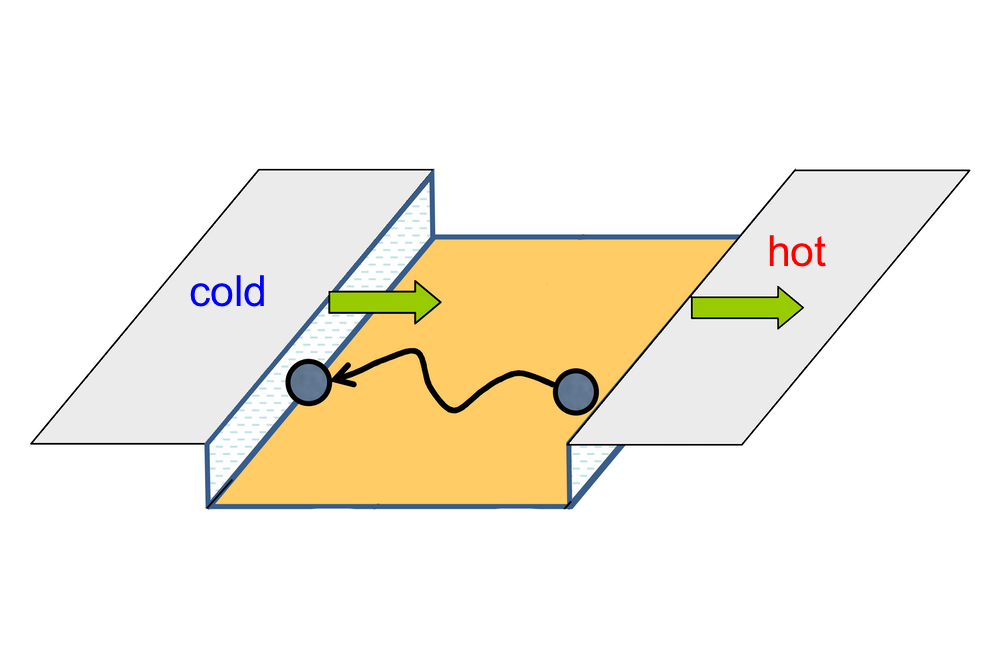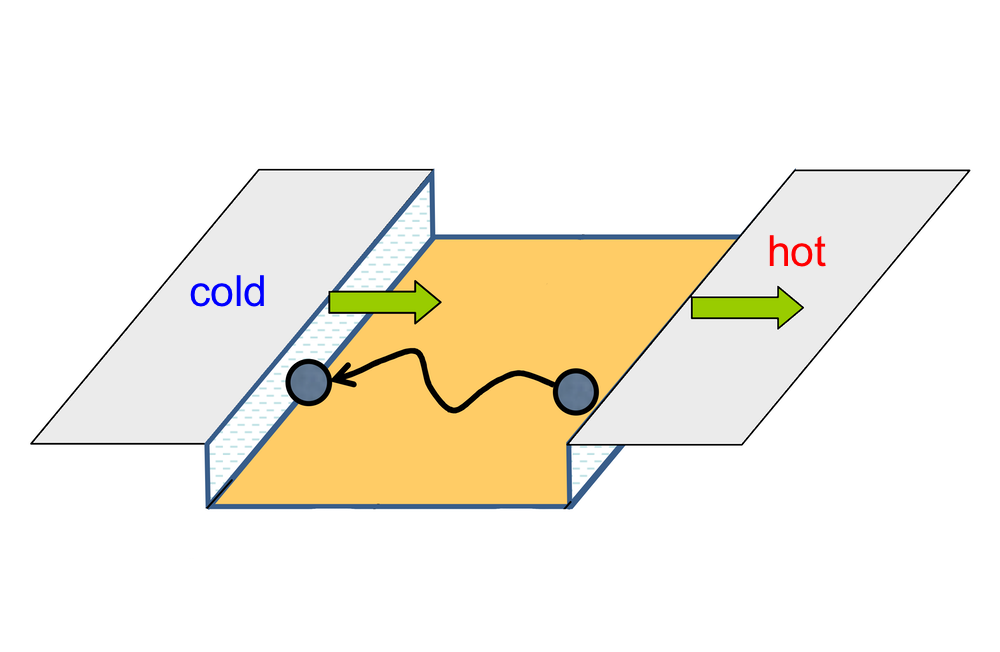Measuring Thermal Migration
In cell phones and other devices, a large temperature difference across a microcircuit can cause atoms to migrate, eventually resulting in faulty electrical connections. This so-called thermomigration has now been tracked at the microscale, revealing a diffusion-related force that drives the motion [1]. The researchers studied shallow depressions, or “basins,” on the surface of a square silicon wafer that was heated on one edge and cooled on the opposite edge. They observed the motion of the basins as atoms migrated in response to the temperature difference. The inferred force and the general characterization of the process could help other researchers develop new ways to control the growth of nanostructures.
The rate of thermomigration from one place to another is proportional to the temperature difference (gradient) between the two locations. “Engineers work a lot on design to avoid thermal gradients,” says Frédéric Leroy from the Aix-Marseille University in France. But he says that a deeper understanding of basic principles behind the motion has been lacking. “We propose a way to measure the migration quantitatively in order to have a very precise value of the force driving the motion.”
To capture the atomic motion, Leroy and his colleagues started with a 9-mm-wide silicon wafer, which had a very flat, uniform surface. They applied a heat source to one edge and a heat sink to the other, creating a temperature difference of roughly 100° C. Under this gradient, the team expected that silicon atoms on the surface would migrate from hotter to colder regions. But actually seeing this movement would be difficult. “We do not measure the atomic motion directly because atoms are moving much too fast,” Leroy says.
Instead, the researchers used an electron microscope to observe one-atom-deep depressions on the wafer surface. By taking a series of images, the team detected movement of these several-micrometer-wide features toward the hot edge of the wafer at a speed of about 0.2 nanometers per second (nm/s).
The researchers explain the basin motion as the result of silicon atom diffusion. Atoms detach from the hotter wall of a basin and begin moving randomly along the basin floor, as in a 2D gas. When one of these diffusing atoms reaches the colder wall of the basin, it can reattach. The net effect is an advance of the basin walls in the direction of the heat source.
Using this diffusion model, the team was able to calculate a thermomigration force of roughly 10−8 eV/nm, which is millions of times smaller than the forces responsible for chemical bonding. Leroy says that the thermomigration force should be stronger within microcircuits, where the thermal gradients are larger. But determining how much stronger the force would be will require more experiments with other types of materials. These tests could indicate whether the diffusion mechanism that the team observes is a general feature of thermomigration.
Surface scientist Hiroki Hibino from Kwansei Gakuin University in Japan was surprised that the motion of the basins was so clear in the data, given that the atomic motion is very complicated and the temperature difference across basins was small (around 0.04° C). “The authors’ successful extraction of the thermomigration effect from the complicated processes is due to the well-designed experiments,” Hibino says.
Condensed-matter theorist Olivier Pierre-Louis from the University of Lyon 1 in France agrees, commenting that the work demonstrates “beautiful technical prowess” and that “the experimental measurements are impressive.” However, he believes that further work is needed to develop the theoretical model. Better understanding of thermomigration, he says, could lead to new nanostructure fabrication techniques in which thermal gradients shuffle atoms over a surface (see Synopsis: Rearranging Nanoclusters Using Randomness). “Thanks to their paper, we now have numbers to say what is possible and what is not,” Pierre-Louis says.
–Michael Schirber
Michael Schirber is a Corresponding Editor for Physics Magazine based in Lyon, France.
References
- F. Leroy et al., “Determination of the thermomigration force on adatoms,” Phys. Rev. Lett. 131, 116202 (2023).





